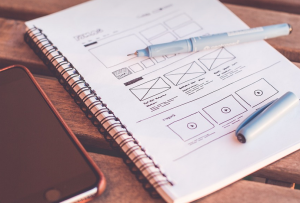
What are Karyotypes, and Why Should Students Care?
Okay, so you’ve probably heard “karyotype” thrown around in a science class. Think of it like a photo album for your cells, showcasing their structure and organization. Now, imagine this album is specifically focused on the genetic blueprint that makes you *you*. That’s what human karyotypes are! These detailed images help us understand the number and arrangement of chromosomes, which carry our genes – essentially, the instructions for building and running a human body. Understanding these tiny blueprints is crucial because they play a critical role in determining everything from height to hair color to susceptibility to certain diseases. Plus, karyotypes are like detective work, helping us uncover genetic mutations that could be linked to inherited disorders or even cancer.
Why Should Students Be Excited About Karyotyping?
You might wonder why you should care about something as technical and complex as karyotyping. Well, here’s the thing: it connects directly to you! We all have 46 chromosomes – 23 from our mom and 23 from our dad. But how they line up in a karyotype gives us a glimpse into our unique genetic makeup. Think about it this way: Imagine each chromosome as a thread holding a part of your family’s secret code! Exploring karyotypes is like unlocking those secrets, helping students: * **Appreciate the beauty and complexity of life:** Karyo-typing reminds you that even small details hold vital information. It’s like learning how tiny components can build something amazing like a human body. * **Develop critical thinking skills:** Analyzing karyotypes involves deciphering patterns, identifying abnormalities, and understanding their potential significance – all essential skills in many fields. It’s an interactive puzzle that helps students see the bigger picture of biology. * **Gain insights into the wonders of genetics:** Karyotyping opens doors to a world of genetic discoveries, from learning about inherited traits to addressing health challenges. It’s like being granted access to the inner workings of life itself!
How do Students Explore Human Karyotypes?
Now that we’ve covered the why and how, let’s dive into the methods used by students to explore human karyotypes in 2024. Modern technology helps make it more accessible than ever before: * **Computer simulations:** These digital tools allow students to manipulate chromosome models, observe different karyotypes, and learn about genetic disorders in a virtual setting. Think of them as interactive textbooks for the next generation of bio-geeks! * **Microscope visualization:** Nostalgic yet powerful, microscopic visualization offers students an immersive experience. By observing actual stained chromosomes under a microscope, they can physically see the 46 pairs that make up their genetic blueprint. * **Case studies and real-world applications:** Real-life scenarios help students learn about how karyotyping plays a role in various fields like medicine, forensic science, and even genealogy. Think of it as learning to solve puzzles based on evidence!
The Impact of Karyotype Exploration
The value of student exploration extends beyond just understanding the basics. It fosters a deeper appreciation for the intricate workings of life: * **Empowering future scientists:** Understanding karyotyping equips students with valuable knowledge and skills needed for diverse scientific careers, from research to healthcare.
It’s not about memorizing details; it’s about grasping the big picture – how our cells work, how diseases develop, and what we can do to improve lives.
* **Fueling social change:** Karyotyping has been pivotal in advancements like genetic testing and personalized medicine. This knowledge can be applied to create more impactful solutions for health challenges facing today’s society. * **Understanding the human connection:** Studying karyotypes sheds light on how we are all connected through our shared ancestry. This exploration fosters a sense of community and belonging, connecting students with larger ideas like evolution and diversity.
The Future of Student Karyotyping
The future for student exploration of human karyotypes is bright! Advancements in technology continue to unlock new possibilities: * **Artificial Intelligence (AI):** AI-powered tools for analyzing karyotypes are on the horizon, enabling faster and more accurate identification of genetic abnormalities. It’s like having a microscopic superhero guiding students through complex data, helping them make informed decisions about their health! * **Interactive platforms:** Educational platforms will continue to evolve, offering engaging experiences that connect students to real-world applications of karyotyping. Imagine interactive games or simulations where students can “design” their own human karyotypes. By exploring student exploration of human karyotypes in the future, we’re not just gaining knowledge but shaping the next generation of scientists and thinkers who will make a lasting impact on the world. It’s about empowering them to be the changemakers, the pioneers of new discoveries, the creators of a more empathetic and informed society.



